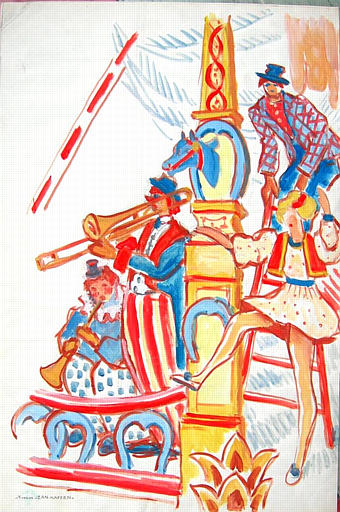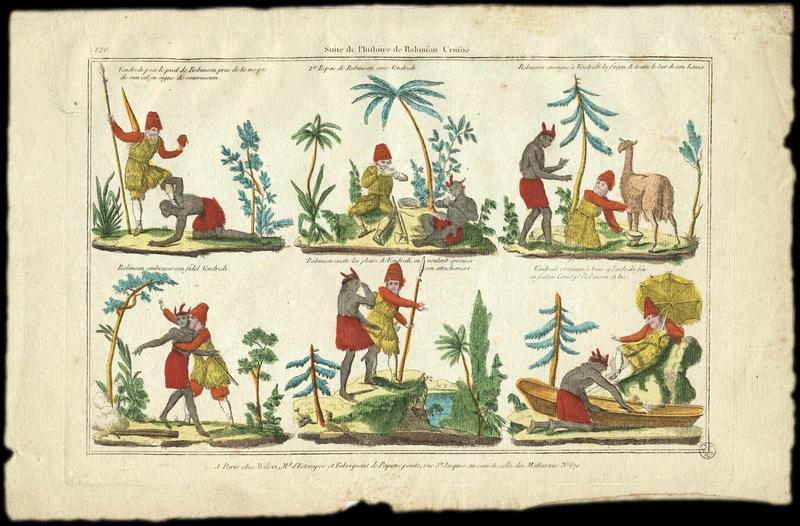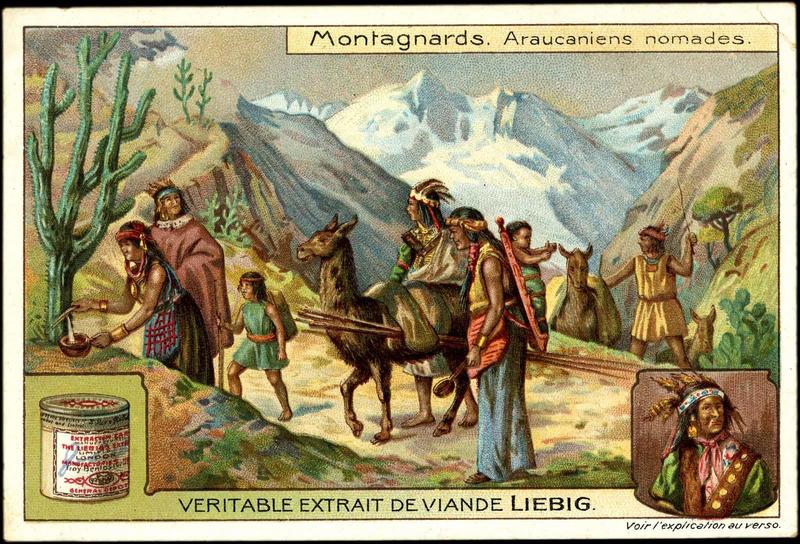Environ 10 résultats pour « Lama (animal) »
-
.jpg/200px-Llama_de_Bolivia_(pixinn.net).jpg)
Lama (animal)
Le lama blanc ou lama (Lama glama) est un camélidé domestique d'Amérique du Sud. Le terme « lama » est souvent utilisé de manière plus large pour s'appliquer aux quatre espèces animales proches qui constituent la branche sud-américaine des camélidés : le lama blanc lui-même, l'alpaga, le guanaco et la vigogne (voir pour cela le genre lama).
-

-
- Domaine(s) :
- Céramique
- Ethnologie
-
- Désignation :
- braserito (zoomorphe)
-
- Sujet représenté :
- Lama (animal)
-
- Datation :
- XIXe siècle
-
-

-
- Artiste(s) :
- Yvonne Jean-Haffen
Le Cirque : grande parade aux animaux [titre attribué]
-
- Domaine(s) :
- Dessin
- Divertissement
-
- Sujet représenté :
- Cirque
- Clown
- Costume
- Instrument de musique
- Lama (animal)
- Poney
-
- Datation :
- XXe siècle
-
-

-
- Artiste(s) :
- Fonderie Hébrard
- Rembrandt Bugatti
DEUX LAMAS
-
- Domaine(s) :
- Sculpture
-
- Sujet représenté :
- Lama (animal)
-
- Datation :
- XXe siècle
-
-

Suite de l'histoire de Robinson Crusoé. (titre inscrit)
-
- Domaine(s) :
- Estampe
- Ethnologie
-
- Sujet représenté :
- Arecaceae
- Fourrure
- Hache
- Lama (animal)
- Race humaine
- Vêtement
-
- Datation :
- XVIIIe siècle
-
-

Suite de l'histoire de Robinson Crusoé. (titre inscrit)
-
- Domaine(s) :
- Estampe
- Ethnologie
-
- Sujet représenté :
- Arecaceae
- Barque
- Fourrure
- Lama (animal)
- Race humaine
- Vêtement
-
- Datation :
- XVIIIe siècle
-
-

Suite de l'histoire de Robinson Crusoé (titre inscrit)
-
- Domaine(s) :
- Estampe
- Ethnologie
-
- Sujet représenté :
- Araire
- Canon (artillerie)
- Chien
- Lama (animal)
- Race humaine
- Tonneau (récipient)
-
- Datation :
- XVIIIe siècle
-
-

[EXPOSITION UNIVERSELLE 1889] PEROU (titre inscrit)
-
- Domaine(s) :
- Estampe
- Ethnologie
-
- Sujet représenté :
- Allégorie
- Cactaceae
- Costume traditionnel
- Couronne (attribut)
- Espagnols
- Femme
- …
-
- Datation :
- XIXe siècle
- XXe siècle
-
-

Suite de l'histoire de Robinson Crusoé (titre inscrit)
-
- Domaine(s) :
- Estampe
- Ethnologie
-
- Sujet représenté :
- Arecaceae
- Barque
- Fabrication
- Hache
- Lama (animal)
- Lance
- …
-
- Datation :
- XIXe siècle
- XVIIIe siècle
-
-

Suite de L'Histoire de Robinson Crusoé. (titre inscrit)
-
- Domaine(s) :
- Estampe
- Ethnologie
-
- Sujet représenté :
- Arc (arme)
- Esclavage
- Hache
- Lama (animal)
- Lance
- Nu (genre artistique)
- …
-
- Datation :
- XIXe siècle
- XVIIIe siècle
-
-

-
- Artiste(s) :
- Anonyme
Le Monde des Mammifères (titre inscrit)
-
- Domaine(s) :
- Estampe
-
- Sujet représenté :
- Fleur
- Lama (animal)
- Viscache
-
- Datation :
- XXe siècle
-
-

-
- Artiste(s) :
- Anonyme
Montagnards.Araucaniens nomades (h.d.) (titre inscrit)
-
- Domaine(s) :
- Estampe
-
- Sujet représenté :
- Amérindiens
- Boisson
- Cactaceae
- Inde
- Lama (animal)
- Montagne
-
- Datation :
- XXe siècle
-
